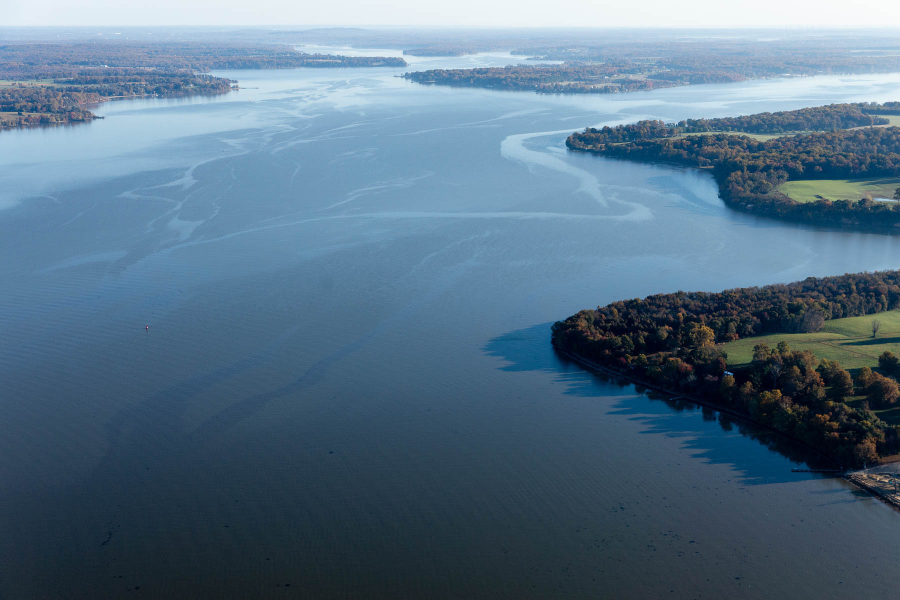The Chesapeake Bay sees its smallest dead zone in 39 years
The 2023 dead zone was the smallest on record

According to calculations from the Maryland Department of Natural Resources (DNR) and the Virginia Institute of Marine Science (VIMS), the Chesapeake Bay’s 2023 summer dead zone was the smallest since scientists began tracking it in 1985.
The dead zone is an area of low oxygen that forms when the nutrients nitrogen and phosphorus wash into the Bay and spike algae growth. After blooming rapidly, the algae dies off, which sucks oxygen out of the water and creates hypoxic (low-oxygen) conditions that crabs, oysters, striped bass and other organisms can’t survive in.
Since 1985, researchers have been calculating the size of the Bay’s dead zone each summer, when it's at its largest. Both DNR and VIMS rely on routine water quality tests and statistical calculations to determine the size of the summer dead zone, although the agencies take slightly different approaches to calculate the overall size.
This year, DNR and VIMS each reported a historically low measurement: .52 cubic miles for DNR and and .58 cubic miles for VIMS. Both calculations are the lowest on record and well below the long term average of .97 cubic miles.
For the most part, the formation of dead zones comes down to the amount of nutrients that are on the land and in the water, and the amount of rainfall washing them into the Bay’s mainstem. 2023 was a less rainy or “low flow” year. Estimates from the United States Geological Survey show that the amount of freshwater flowing into the Bay from October to September was below average, and that in June, freshwater flows were in the historical lowest 25th percentile.
The total loads of nitrogen and phosphorus have not yet been monitored for 2023. However, each jurisdiction with water flowing into the Bay implements pollution-reducing practices across the landscape to limit nutrient runoff. It’s estimated that between 2009 and 2022, the six watershed states and the District of Columbia met 51% of the goal to reduce nitrogen and 60% of the goal to reduce phosphorus by 2025.
This year’s historically small dead zone is one of several encouraging factors to reflect on as we celebrate the Chesapeake Bay Program’s 40th anniversary and look toward the future of protecting the Chesapeake Bay. In 2024, the partnership will announce a forecasted prediction of the upcoming summer dead zone, followed by the official numbers released in the late fall or early winter.

Comments
There are no comments.
Thank you!
Your comment has been received. Before it can be published, the comment will be reviewed by our team to ensure it adheres with our rules of engagement.
Back to recent stories